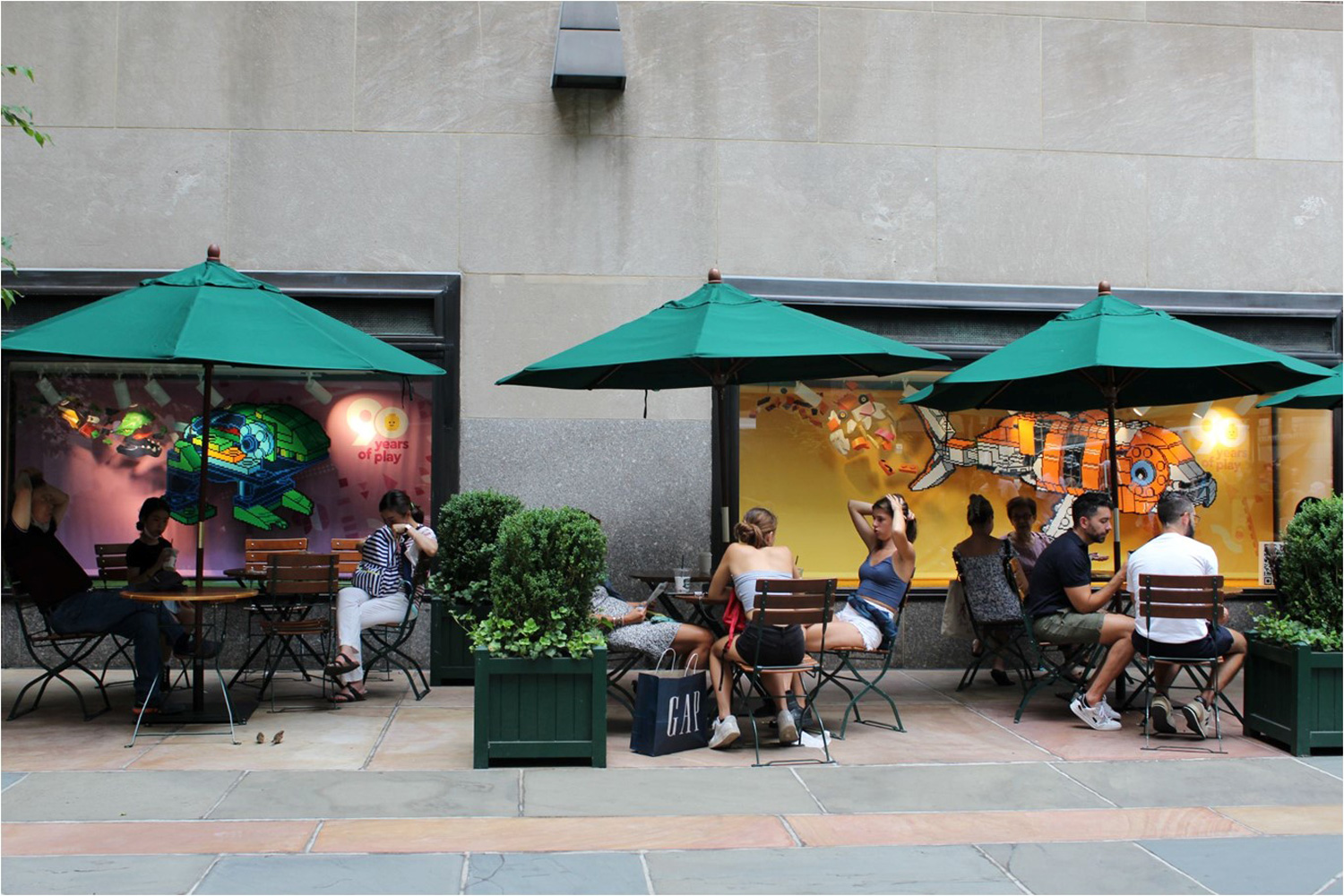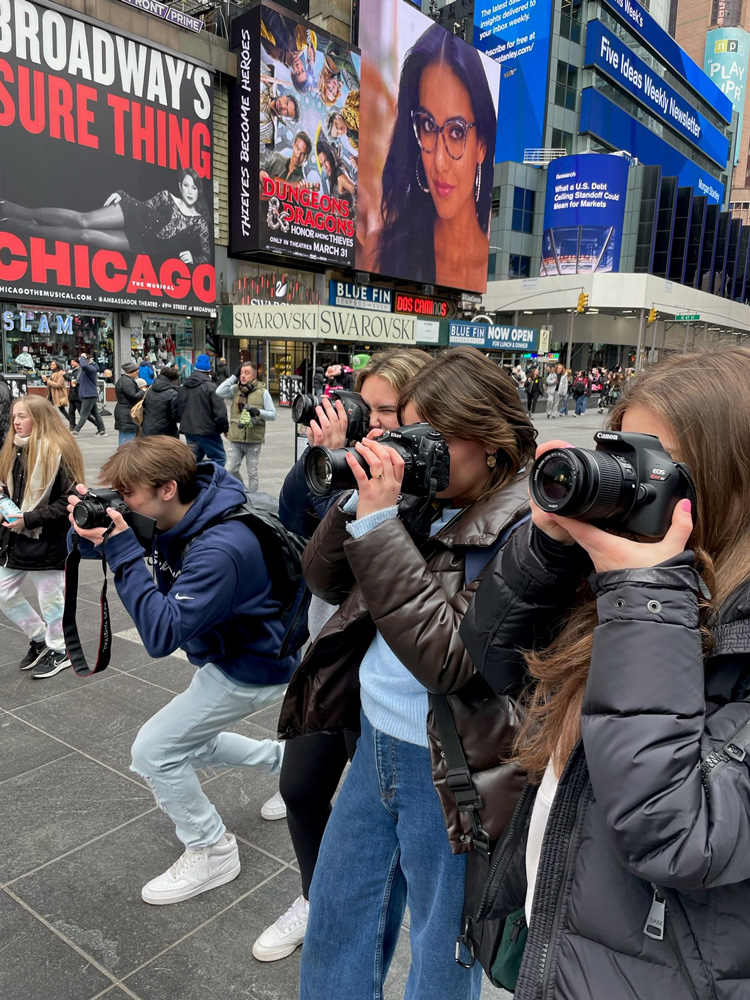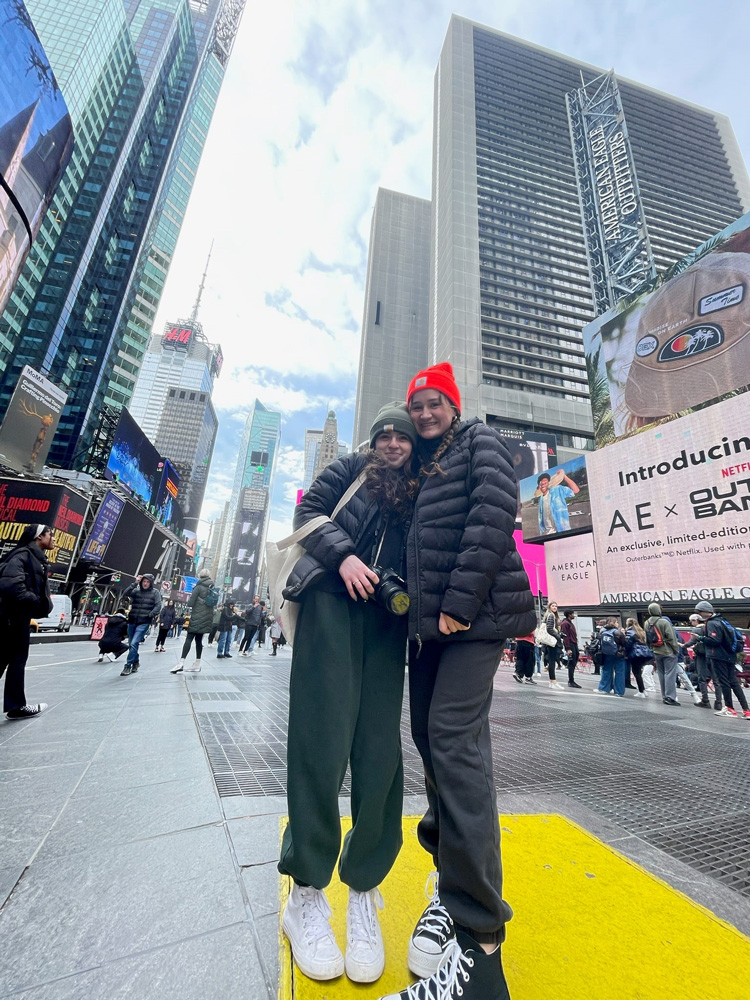Advanced Photography Students Visit Manhattan
March 13, 2023
Huntington High School Advanced Photography students traveled into Manhattan for an opportunity to shoot documentary images on location along New York City streets.
Art teacher Pamela Piffard prepared the students by presenting a lesson on “documentary street photography.”
Once they stepped out onto Manhattan’s busy streets, students enjoyed a real life lesson in documentary photography and looking at the details of everyday life in the booming city.
“Documentary photography, also known as social documentary photography, is a popular form of photography used to chronicle significant and historical events as well as daily life,” said Mrs. Piffard during the pre-trip lesson. “Documentary photography will show the relationship between people and their environments. It can be at work, church, home, in the streets, at war, etc. The photography attempts to produce truthful, objective, informative and usually candid photography of a particular subject, most often pictures of people.”
On the ground in Manhattan, students carefully chose their images with the hope of capturing something unique and interesting.

“I had such a fun time on our street photography trip,” Reese Rinaldi said. “It was so cool to see New York City landmarks and all different types of fashion that we were able to take pictures of. I am very excited to see how they turned out.”
Mrs. Piffard did her best to suitably prepare her students prior to the trip in order to maximize their experience and ultimately their work.
“Documentary photographers are our eyewitnesses with their observations of the world and its people,” Mrs. Piffard said. “They use their knowledge, skills and trained eye to see the hidden messages in our societies and capture the moments of time for all of us to see. Documentary photography plays an important role in educating people about our world and at times to pave the way for social change.”
The photography students hung their teacher’s every word as they prepped for the trip.
“Street photography is conducted for art or ‘enquiry’ that features unmediated chance encounters and random incidents within public places,” Mrs. Piffard said. It’s a genre of photography that records everyday life in a public place. The very publicness of the setting enables the photographer to take candid pictures of strangers, often without their knowledge.”
Mrs. Piffard offered students advice for shooting documentary and street photos:
• Use greater depth of field to ensure things are in focus
• Try finding an interesting location first, and then wait for people to walk by (this is called ‘fishing’)
• Look for ‘characters,’ but be mindful that you are not exploiting people for being ‘weird,’ being homeless, having a mental illness or other disability.
• You can ‘shoot from the hip,’ which means that you hold your camera down by your side so people don't realize you are photographing them
• You can also just use your phone (but we prefer your DSLR!) You can use the volume button on an iPhone to take a photo. If your phone is on silent, it won’t even make a shutter sound. You will be less conspicuous.
• Don’t forget what you have learned about composition, light and shadows, line, color, etc. when you are taking street photos.
• Be mindful and really look at the world around you.
The trip seem to have educated and inspired the teenagers, who returned to Huntington with plenty of new ideas.
It’s been almost 25 years since Mrs. Piffard arrived at Huntington High School in September 1998 to begin her teaching career. She studied at the Fashion Institute of Technology, earning an associate’s degree in photography in 1996 and then obtained a B.A. in photography and a state teaching certificate at Parsons School of Design/New School University in 1998. She received a master’s in graphic design at Long Island University–C.W. Post College in 2003.
The faculty member’s love affair with photography started early in life. “I first took a class in middle school,” she said. “I wanted to do it because my sister had liked it. Immediately I knew it was a passion. By the time I was 14, I had my own darkroom and I spent every spare moment printing.”
By the time she was 15, Mrs. Piffard was already shooting local bands and the following year as a 16-year old she was working for “Under the Volcano” fanzine (a magazine for fans that’s typically produced by amateurs) and had done three albums.
What’s her advice to aspiring photographers? “To get started, just shoot a lot and keep doing it,” Mrs. Piffard said. “Network as much as you can and show your work to anyone who will look at it.”



